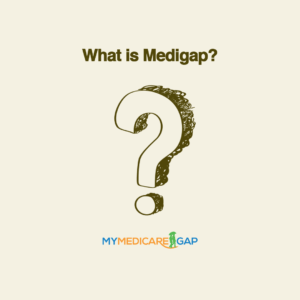
Find the Medicare Supplement Insurance Coverage that’s Right for You
Easily Find Affordable Medicare Supplement Plans
There’s a Better Way to Handle Your Medicare Bills
Understanding the totality of your benefits and how much you’ll need to pay out-of-pocket is one of the most confusing and frustrating aspects of healthcare. When it comes to Medicare coverage, there are extra expenses that are not fully covered, which leaves the insured person responsible for costly bills. While this may not be a big deal to some, it could be quite overwhelming to many others.
As a solution to such a common issue, insurance carriers provide standardized Medicare Supplement riders, also known as Medicare Supplement insurance plans. These plans help Medicare holders manage additional costs by minimizing the out-of-pocket expenses. With Medigap coverage, you get rid of extra expenses by bridging the gap in your Original Medicare coverage.
With a Medigap plan, you’ll worry less about the hassle of managing extra out-of-pocket expenses that come with your Medical bills and focus more on enjoying retirement.
What are Medigap Plans and How do they differ?
Medigap is an insurance coverage sold by insurance carriers. These plans are standardized and Medigap must follow federal guidelines to be approved as an insurance rider for Medicare.
– You cannot obtain coverage unless you have Original Medicare (Part A & B)
– Medigap does not offer joint plans, meaning a married couple would need two separate policies, one for each spouse.
– Medigap cannot be used in combination with Medicare Advantage.
– Medigap plans are standardized nationwide. This means, for example, a Medigap Plan F in one state provides the same coverage as a Medigap Plan F sold by a different insurance carrier in a totally different state.
– Although the plans are standardized, the pricing of each insurance carrier may vary.
Paying for your Medicare Supplement Insurance Coverage
– How does paying for Medigap work?
If you have Original Medicare coverage (Medicare A & B) in combination with a Medigap plan, you’ll end up paying two separate premiums. The first for Medicare Part B, and the other for the Medigap policy. This is in case you have no premiums to pay for Medicare Part A.
– How do I know whether or not I have to pay a premium for Medicare Part A?
If you are 65 and you or your spouse paid Medicare taxes for 10 years, you don’t pay a premium for Medicare Part A. Otherwise, you’ll need to pay it.
– How do I pay my Medicare Part B premiums?
Medicare Part B premiums are automatically taken from your Social Security income check.
– How do I pay for a Medigap plan?
As opposed to Original Medicare premiums, Medicare Supplement insurance plans are paid directly to the insurance carrier you purchased your policy from.
It is important to note that neither Original Medicare (Part A & B) nor Medigap cover outpatient prescription drugs. If you’re in need of such coverage, you can enroll in a Medicare Part D coverage policy, which will make you responsible for paying another separate monthly premium. Medigap policies used to include outpatient prescription drug coverage until Medicare Part D became available in 2006. However, some previous policies issued before 2006 may have been grandfathered-in.
What does Medigap cover?
Medicare Supplemental insurance coverage handles the out-of-pocket expenses which you, as an Original Medicare holder, would have to pay on all your medical bills. These expenses are covered by Medicare, but not fully covered.
In most cases, Medicare Gap plans are used to handle out-of-pocket expenses for Medicare-approved medical services. For example, Gap plans do not cover dental and vision expenses, since Original Medicare covers only routine dental and vision services.
What About Deductibles and Coinsurance?
Both Medicare Part A & B both come with deductibles and coinsurance. When the deductible is met, Medicare Part B covers 80% of the approved amount, leaving you to pay the other 20% with no limit on out-of-pocket expenses.
For every benefit period, Medicare Part A applies a deductible, then coinsurance starts to accrue after 60 days in the hospital. Although it is termed coinsurance, it is actually a fixed daily amount, not a percentage of the cost as it may seem.
If your stays go beyond 20 days in a skilled nursing facility, a coinsurance charge is applied, as per Medicare Part A. When it comes to Medicare Part B, there’s no limit on the amount an enrollee can spend on out-of-pocket expenses under Part A.
Medigap coverage comes into play to bridge the gap in Medicare and protect Medicare holders from such deductibles and coinsurance expenses.